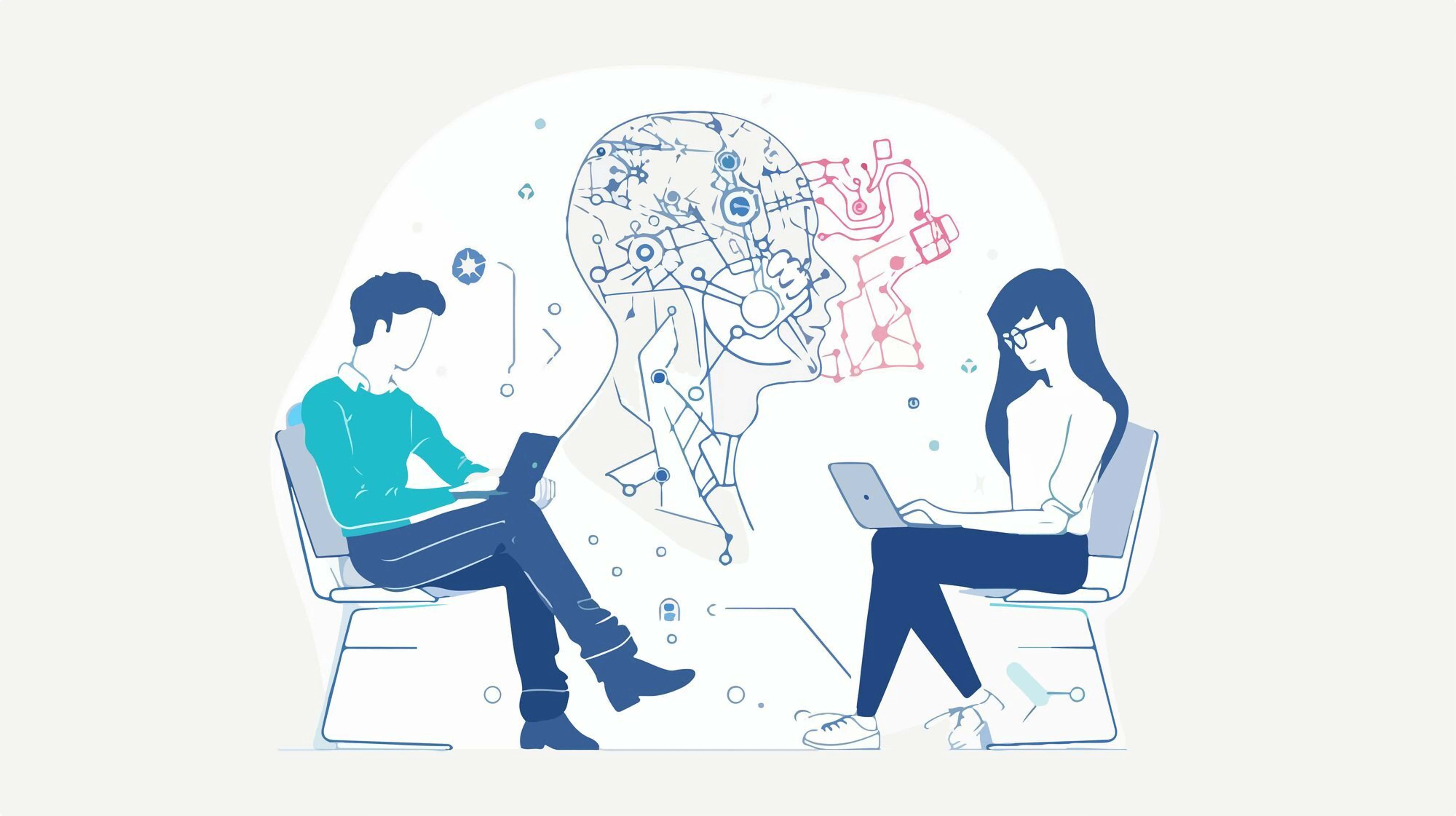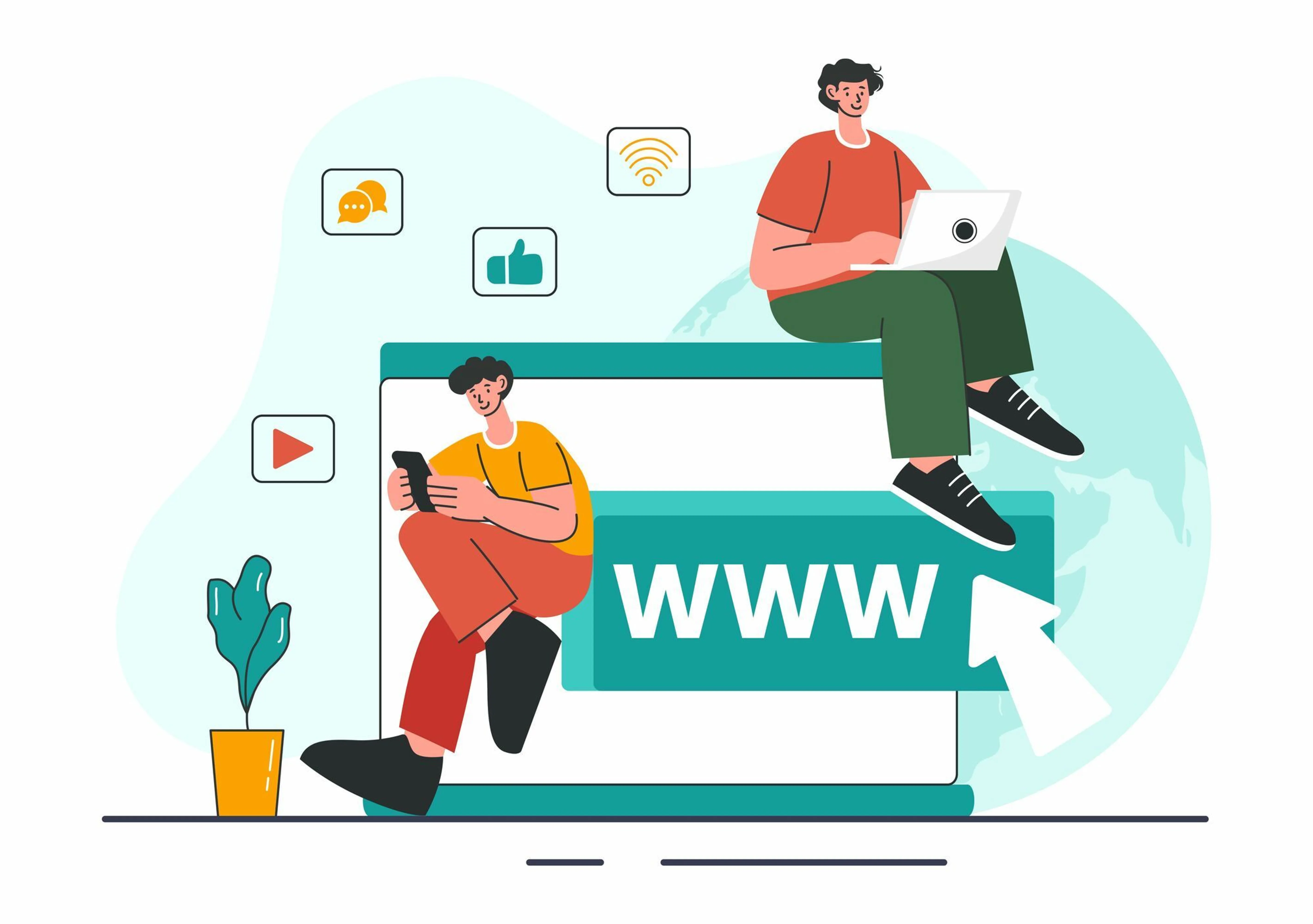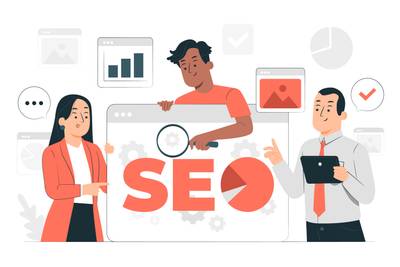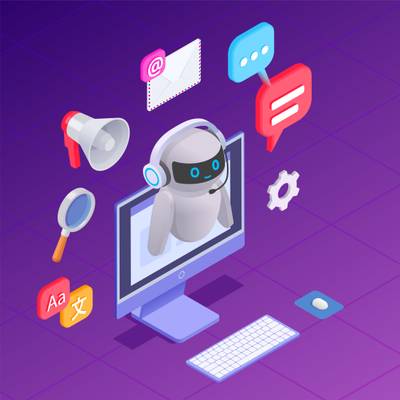What is the language of benefits and why is it important for your website?
Benefit language is a way of presenting an offer that focuses on the specific benefits that a product or service will bring to the customer, rather than on the features themselves.
Imagine that you are selling running shoes. You can describe them by listing the features: lightweight construction, cushioned sole, breathable material. But will that encourage someone to buy? Not necessarily.
Now look at it from the perspective of benefit language: "Run farther and faster with a lightweight construction that is easy on your feet. Enjoy excellent cushioning with every step and stay comfortable with breathable material, even during long workouts." Do you see the difference? Instead of dry facts, you give the customer a promise: with these shoes, you will achieve more.
Why is writing in benefits important?

Writing in the language of benefits is important because of its psychological attitudes. People don't buy products, they buy better versions of themselves and solutions to their problems. They want to know what exactly they will gain, what problems they will solve, how their lives will improve. That's why your website should not only inform, but above all show the benefits of your service or product.
Remember that every feature of a product or service is actually a hidden benefit, a delivered value. Your task is to bring it to light and present it in a way that will reach the heart and mind of a potential customer. This is not always easy, sometimes it requires a deep understanding of the needs and desires of the recipients. But when you succeed, the effects can exceed your expectations.
It is not without reason that it is said that good copywriting sells. And the language of benefits is its foundation. Studies show that websites that effectively communicate added value for the customer enjoy up to 30% higher conversion rates than those that focus solely on features. This can be the difference between success and failure of your online business.
So, if you want your website to attract customers like a magnet, focus on the language of benefits. Start by understanding what you are really selling - not a product, but a better version of the customer's life. Then communicate it at every step, in every element of the page. From catchy headlines, through compelling descriptions, to calls to action. Let your website not be just a business card, but a promise of a better tomorrow for anyone who decides to associate with you.
How to identify the most important benefits for your target group?
The foundation is a deep understanding of your target group. Who are your ideal customers? What are their problems, dreams, and fears? What motivates them to act? The answers to these questions are essential to creating a message that really works.
Personas
One of the most effective tools is personas - or rather, profiles of ideal customers. By creating personas, you force yourself to go beyond dry facts and statistics and look at your customers as living, breathing people. And that paves the way for empathy and understanding.
But personas are just the beginning. To get to the heart of the matter, you have to dive deeper. Conduct surveys and interviews with real customers, asking not only what they like about your product, but above all - how using it has changed their lives for the better. What problems have they solved, what dreams have they fulfilled, what frustrations have they avoided?
Competitive analysis and benefit identification
Don't forget about competition analysis. Check what benefits other players on the market are highlighting and think about how you can stand out. Maybe you offer something that no one else has? Or maybe you can better respond to the hidden needs of customers? This is your chance to shine.
Remember that benefits are not only what is obvious and tangible. Sometimes the most valuable are emotional benefits - a sense of security, belonging, fulfillment. So don't be afraid to dig deeper, ask about feelings and values. Because it may turn out that your product not only solves a practical problem, but also gives customers something they have been looking for for a long time - a new, better version of themselves.
Identifying key benefits is a process that requires time, effort and openness. But every minute spent listening to and understanding your customers is an investment that will pay off. Because when you finally hit the nail on the head and give people what they really need - not just a product, but the promise of a better life - your website will become not only a source of information, but a real magnet for customers.
Using the language of benefits on a website

PAS (Problem-Agitate-Solve)
PAS is a storytelling tool that draws your audience into a story. You start by presenting a problem your customer is struggling with. Then you dig deeper into that problem, showing how it affects the customer’s life. And finally, you present your product or service as a solution that will bring relief and improve the situation. Sound familiar? That’s because this technique works, from TV commercials to websites.
Headings and subheadings
Another thing is the headings and subheadings. They are what grab the reader's attention and decide whether they want to delve into your content. That's why they should be stuffed with benefits. Instead of "Our features," write "How our app will save you time and money." Instead of "About us," write "Why we're your best choice." Follow the rule: every heading is a promise of value.
And speaking of features... When describing the features of your product, always ask yourself: "What does this mean to the customer?". It's not enough to say that your app has an auto-save feature. Say that thanks to this, the user will never lose their work, even if the power goes out. Translate each feature into a tangible benefit, and your argument will gain strength.
Storytelling
Remember the power of stories. People love stories because they allow you to identify with the hero and experience his adventure. So weave storytelling into your content. Show how your product changed someone's life, what problems it solved, what dreams it helped fulfill. Let your customers become heroes with whom the recipients will want to identify.
Of course, each of these techniques requires adaptation to the nature of your brand and the expectations of the target group. You will speak differently to teenagers than to corporate executives. But the basic rule remains the same: focus on benefits, not features. Show, don't describe. Engage emotions, not just intellect.
I know this may sound overwhelming, especially if you are just starting your copywriting adventure. But remember that perfection comes with practice. Every text you write will bring you closer to mastering the language of benefits. And when you finally hit the jackpot and see your website start generating leads and sales, you'll feel a sense of satisfaction that nothing else can give you.
10 Examples of Moving from the Language of Features to the Language of Benefits
- Before:
Our smartphone has 128 GB of memory.
After:
With our smartphone, you will never run out of space for all your important photos, videos and apps.Explanation: Instead of providing dry technical specifications, we focused on the real benefit for the user - plenty of space for all the content that is important to them - Before :
The shampoo contains aloe extracts.
After:
The aloe extracts will leave your hair moisturized, soft, and shiny.Explanation: We've gone from an ingredient (feature) to the effect that the ingredient has on the hair (benefit). This shows the customer the tangible difference the product will make in their life. - Before: The course lasts 6 weeks.
After: In just 6 weeks, you will master a skill that will open up new career opportunities for you.Explanation: The length of the course is a feature. But what will the client gain with that time? New skills and career opportunities. These are the real benefits. - Before:
Your subscription includes unlimited access to content.
After:
With our subscription, you will gain unlimited access to knowledge that will help you grow your business.Explanation: Unlimited access is a feature. But what is this feature for? Growing the customer's business. Focusing on this goal gives the feature real meaning. - Before:
The shoes are made of waterproof material.
After:
With waterproof shoes, no weather will surprise you - you will be ready for any adventure.Explanation: Waterproof is a feature. But what does it give the customer? The possibility of adventure in any conditions. This is a benefit that appeals to emotions and imagination. - Before:
Software automates repetitive tasks.
After:
Our software takes on tedious, repetitive tasks, giving you more time to focus on strategic projects.Explanation: Automation is a feature. But what does it give the customer? Time. Time for the tasks that really matter. This is a benefit that addresses the customer’s daily challenges. - Before:
The washing machine uses 20% less energy.
After:
With our washing machine, you will not only save on bills, but also do your part to protect the environment.Explanation: Low energy consumption is a feature. But what does it mean to the customer? Savings and the feeling that they are doing something good for the planet. These are tangible, emotional benefits. - Before:
Dog food contains high-quality protein.
After:
Our food will provide your pet with all the ingredients it needs for a healthy and active life.Explanation: Protein quality is a feature. But what does a dog owner really care about? The health and vitality of their pet. Focusing on this shows that we understand the real needs of our customer. - Before:
The mattress has 7 firmness zones.
After:
Our mattress adapts to the shape of your body, providing ideal support and comfort throughout the night. Explanation: The number of firmness zones is a feature. But what does it give the customer? Comfortable, restful sleep. This is a benefit that has a real impact on the quality of life. - Before:
The car accelerates from 0 to 100 km/h in 5 seconds.
After:
With our car, you will feel the adrenaline and joy of driving every time you press the gas pedal.Explanation: Acceleration is a feature. But what is the customer really buying? Emotion. The adrenaline rush, the joy of driving. Appealing to these feelings gives the feature real meaning.
As you can see, in each case we have moved from a bare fact (feature) to what that fact means for the customer’s life and experience (benefits). This is the essence of benefits language – translating specifications into tangible, tangible value.
Remember, choosing the right benefits depends on your target group. What is valuable to one customer may not be valuable to another. That is why it is so important to deeply understand your audience – their needs, desires, challenges. Only then will you be able to offer them benefits that will really reach them.
Optimizing key page elements for the language of benefits

Your website is not just a collection of information, but above all a sales tool. And like any tool, it requires proper optimization to work at full speed. And this is where the language of benefits comes in, which can transform key elements of your website into powerful magnets for customers.
Let's start with the home page, because it decides whether the user will want to stay longer. Here, a strong hit, a catchy headline that immediately communicates the main benefit, counts. Imagine that you only have 5 seconds to convince the recipient. What will you say? "The best running shoes" or "Run for your dreams"? Remember that people are not looking for products, they are looking for better versions of themselves.
But the home page is just the beginning. Equally important are the product subpages, where you go into the details of your offer. This is where you need to translate features into benefits, show what your product will change in the customer's life. Imagine that you sell online courses. Instead of listing dry facts like "12 modules, 6 hours of video", say "You will master a new language in 30 days, without leaving your home". This is a promise that sells.
Let's not forget about the "About Us" subpage either. Too often, companies treat it as a place to pour out their CVs. But the truth is that the customer doesn't care how many years you've been on the market. What matters is what your experience means to them. So instead of "We've been around since 2010," write "Over 10,000 customers have trusted us, join them and discover the difference." This is the language of benefits in practice.
Finally, the cherry on the cake - calls to action, or CTAs. They directly translate into conversion, so optimizing them is an absolute must. And again, the key is the language of benefits. Instead of "Buy now," go for "Get your ticket to a better future." Instead of "Register," go for "Join the elite group of experts." Each CTA is a chance to give the recipient additional motivation to act.
Of course, optimization is an ongoing process. It's not enough to write a catchy headline once and call it done. You have to constantly test, measure, improve. Conduct A/B tests, analyze data, listen to user feedback. This is the only way to build a website that not only informs, but above all sells.
Remember that the language of benefits is not just a marketing ploy. It is a manifestation of empathy, understanding the needs and desires of your customers. Because when you speak to them the language of benefits, you are really saying "I understand you. I know what you're going through. And I have something that can help you." And that is the beginning of every good relationship, in business and in life.
The Most Common Mistakes in Using the Language of Benefits and How to Avoid Them
Filling the text with benefits
I understand the temptation to cram every sentence with the promise of a better life, but trust me, less is more. If every paragraph screams “buy me, I’m the best,” your credibility will plummet faster than Bitcoin on a bad day. Instead, pick a few key benefits and focus on them. Make them like sniper shots, accurate and precise.
Phrases instead of specifics
"Best quality", "revolutionary technology", "exceptional offer" - sound familiar? Unfortunately, these hackneyed slogans not only no longer convince anyone, but even arouse suspicion. Because if something is so good, why don't you say specifically what's so good about it? That's why always rely on facts, figures, examples.
Instead of "best quality", say "materials tested in extreme conditions". Instead of "revolutionary technology", say "30% faster loading than the competition". Specifics sell, empty words scare away. Of course, remember not to forget to include text with these specific data that answers the question: "So what?"
Ignoring objections
The reality is that every product has its flaws and limitations. And if you pretend they don't exist, you'll only fuel your customer's doubts. So don't be afraid to meet them head on. Address potential problems and show how your solution addresses them. This will show that you're honest and that you truly believe in what you're selling.
Lack of consistency
If your home page promises "foreign languages in 3 months" and the course subpage says "6 months of learning", then you have a problem. The customer will feel cheated and will lose trust in you very quickly. Therefore, take care of the consistency of communication at every level - from headlines, through descriptions, to calls to action. Let your message be like a well-tailored suit - tailored and without jarring.
As you can see, errors in using the language of benefits are often subtle, but their consequences can be dire. Fortunately, they all come from one source - a lack of empathy and understanding of the customer's perspective. Because the language of benefits is not a set of tricks, it is a way of thinking. Thinking not about what you want to sell, but about what your customer wants to buy.
Therefore, before you start writing, step into the shoes of your recipient. Think about what hopes and fears they have, what challenges they face, what they dream of. And only from this perspective create your message. Be specific, honest, consistent. Treat your customer as a partner, not as a sales target.
How to measure the effectiveness of benefits language on your website?
The first step is to define key performance indicators (KPIs). These are the metrics that best reflect your site’s goals. Want to increase sales? Track your conversion rate. Want to build a mailing list? Look at your subscriber count. Dream of viral fame? Monitor social media shares. Choosing the right KPIs is half the battle.

But numbers alone are not everything. Understanding what stands behind them is equally important, and here tools for analyzing user behavior are invaluable. Heat maps will show you where recipients are clicking, and session recordings will reveal how they move around your site. It may turn out that that captivating headline does not attract attention at all, or that the call to action is simply invisible. Such knowledge is a real treasure.
Once you have the data, it's time to experiment. The best method is A/B testing, where you show half of your users version A of the page, and the other half version B, with a new headline or a different product description. Then you compare the results and choose the winner. It's like a duel of benefits - let the stronger message win.
But don't think that one test is enough. Optimizing the language of benefits is an ongoing process. Monitor your KPIs regularly, analyze user behavior, conduct further experiments. This is the only way to build a page that not only informs, but above all converts.
Remember, however, that numbers are not everything. Behind every click, behind every completed form, there is a living, breathing human being. So don't become obsessed with metrology at the expense of empathy. Listen to your intuition, talk to your customers, collect opinions. Sometimes one honest feedback means more than a hundred charts.
And finally, don't forget about the context. If your site is recording a sudden increase in conversions, that's great! But maybe it's not your brilliant headlines, but a new advertising campaign? Or the upcoming holidays? When analyzing data, always look at the bigger picture.
Measuring the effectiveness of the language of benefits is not just a matter of technique, but also of art. The art of interpreting data, drawing conclusions, making decisions. It's a process that requires patience, humility, and constant learning. But believe me - it's worth it. Because every percentage point of conversion increase means not only more money in your pocket, but above all more customers whose lives have changed for the better thanks to your product.
Summary
Benefit language is a powerful tool in the arsenal of every marketer and website owner. It is not only a way to increase conversions, but above all a method of building lasting relationships with customers.
When using benefit language, remember to be authentic and avoid traps such as overpromise or generic slogans. Focus on the real value that your product or service brings to the customer's life. Remember that the best benefit language is one that not only attracts attention, but also builds trust and motivates to action.
Implementing benefit language on your website is a process that takes time and patience. However, the effects - in the form of higher conversion rates, greater user engagement and customer loyalty - will more than make up for your effort. Start transforming your website from an ordinary business card into a powerful sales tool today.
Frequently asked questions
What is the language of benefits?
Benefits language is a way of communicating that focuses on presenting products or services from the perspective of the value and benefits they bring to the customer, rather than focusing on the features or functions themselves.
Why is benefits language important on a website?
Benefit language is key because it helps convince prospects to take the desired action. It shows how your product or service will solve their problems or improve their lives, which increases the likelihood of conversion.
How do I identify the most important benefits for my target group?
The best way is to conduct market research, surveys and interviews with current customers. Competitor analysis and creating buyer personas also help you understand the needs and desires of your target group.
Does the language of benefits work in every industry?
Yes, benefits language can be adapted to any industry. The key is to understand the specific needs and motivations of customers in a given sector and to formulate the message accordingly.
How do I measure the effectiveness of benefits language on my website?
Effectiveness can be measured by analyzing key performance indicators (KPIs) such as conversion rate, time on page, and bounce rate. A/B testing is also an effective tool for comparing different versions of content.
How to avoid overusing the language of benefits?
The basis for avoiding exaggeration in the use of benefit language is to be authentic and based on facts. Avoid empty promises and focus on real, measurable benefits. Be specific and avoid general statements.
Should benefits language be used throughout the page content?
Yes, benefits language should be present throughout the content, but with varying degrees of intensity. Key elements, such as headlines or calls to action, should be particularly saturated with benefits.
How often should I update the benefits language on my website?
Updating should be an ongoing process. Regularly analyze data, gather customer feedback, and adjust the message to changing market needs. A good practice is to conduct a major revision at least once a quarter.
Can I use the same benefits language for different target groups?
While some benefits may be universal, you’ll achieve the best results by tailoring your language to the specific needs and preferences of each target audience. This may require creating different versions of content for different customer segments.

Adam Naworski



